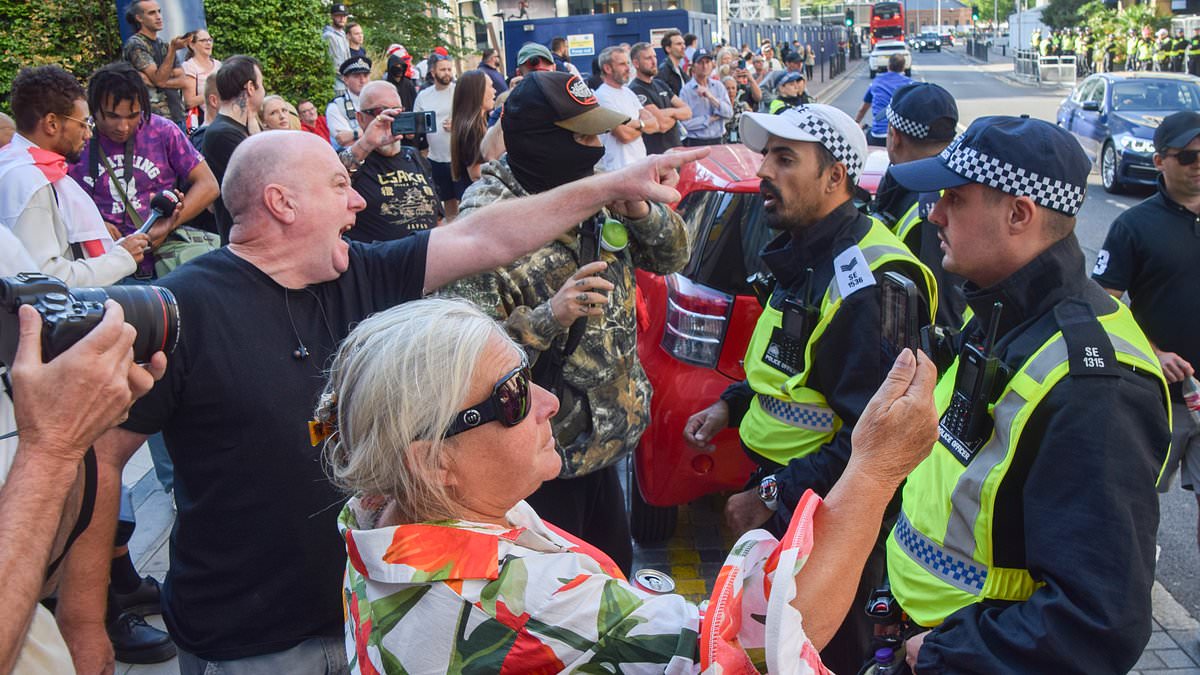
Canary Wharf, once synonymous with London’s thriving financial sector, now finds itself at the center of a heated debate. The decision to house hundreds of asylum seekers at the four-star Britannia Hotel has sparked protests and raised concerns among local residents who say they no longer feel safe.
Protests and Public Outcry
Daily demonstrations outside the Britannia Hotel reflect the growing discontent among locals. Recent reports of an asylum seeker allegedly walking into a woman’s home have only intensified tensions. Protesters and residents alike have voiced their frustration at what they consider a lack of consultation and transparency from authorities.
One local, Eleano Borisenko, who has lived in Canary Wharf for five years, expressed her dismay: “Nobody asked us any questions or discussed this with us. It was a huge shock.” Residents like Tracey Calder have also formed groups for safety, avoiding venturing out alone.
Impact on Canary Wharf’s Image
Once dubbed a “miniature Manhattan,” Canary Wharf’s reputation as a financial powerhouse has been waning in recent years. The trend towards remote work has led several major firms, including HSBC and Clifford Chance, to announce plans to leave the district for smaller premises elsewhere.
This latest development further complicates recovery efforts for the area. Susan Hall, a Conservative Assembly Member, criticized the use of Canary Wharf as a housing site for migrants, calling it indicative of London Mayor Sadiq Khan’s alleged mismanagement. She noted, “This is a prestigious financial district, but it’s clear that safety and community concerns are being ignored.”
Financial and Social Implications
The Britannia Hotel, with rooms typically costing over £400 per night, was originally a symbol of the area’s post-industrial reinvention. However, its transition into a housing facility for asylum seekers has made it a focal point of controversy. Residents point out the increased police presence, frequent protests, and growing concerns about public safety as reasons for dissatisfaction.
Despite these issues, Canary Wharf Group recently reported a slight uptick in the valuation of its office portfolio for the first time in three years, signaling potential green shoots of recovery. However, local financial workers and residents, like Jules Durand, feel the current turmoil could jeopardize the area’s long-term prospects.
Voices on Both Sides
Pro-migrant counter-protesters have also been vocal, emphasizing the humanitarian aspect of providing shelter to asylum seekers. Demonstrators have chanted “No human is illegal” and demanded better treatment for those fleeing dire conditions. Yet, clashes between anti-migrant protesters and supporters have led to multiple arrests, further highlighting the volatile atmosphere.
The Home Office has defended its migrant housing policies, with a spokesperson stating, “When foreign nationals commit serious crimes in our country, we will always do everything in our power to deport them once they have completed their sentences.”
The Road Ahead
As Canary Wharf grapples with these social and economic challenges, its future remains uncertain. While authorities aim to balance the needs of local residents and asylum seekers, the current unrest underscores the broader debate over immigration and urban policy in the UK.
Whether Canary Wharf can maintain its historic prestige or succumb to the weight of these new pressures is a question that time will answer.





